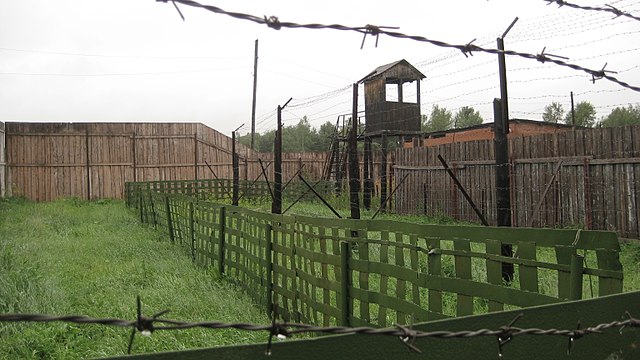
Do the gulags still exist? Technically no, but actually yes.
The gulag is not actually a place. We use the expression gulag to refer to a Russian prison, but it is really the name of the government agency that was in charge of the forced labor camps during the Soviet era. The word gulag is an acronym for Glavnoye Upravleniye Lagerey, which meant Main Camp Administration. It was a special division of the secret police and it was overseen by the Soviet Ministry of the Interior.
The gulags (I’m going to use it in the English sense) didn’t appear overnight. In many countries throughout history, prisoners have been exiled, imprisoned, or enslaved. Russia was no different and many prisoners were forced to work. Ivan the Terrible (1530-84) pushed the Russian empire all the way to the east and the west, claiming Siberia. This huge tract of empty land was explored by fur traders and Russia started to build towns there. However, in the 17th century, Alexis of Russia started to use the empty land for prison labor camps. The system of forced labor was called katorga in Russian.
In the middle of the 19th century, Russian law and society changed a lot. In 1847, the penal code was changed and in 1861 the system of serfdom was abolished. Transport to an enforced labor camp in Siberia became a common punishment for revolutionaries and political dissidents. The frame of what the gulag would become was in place.
After the Russian Revolution in 1917, a new type of prisoner was created. They were called “class enemies”. Lenin and the Bolsheviks used repression as a way to strengthen their position and keep themselves in power. Because their revolution had been successful, they realized that other revolutions could be successful as well. They used the “class enemy” title as a way to imprison anybody that might stand against them. However, they didn’t want to put these prisoners into the regular prisons because of the influence they might have. They envisioned a series of concentration camps to hold the political prisoners and they established a special prison system which they called the Glavnoye Upravleniye Lagerey.
The gulags flourished under the rule of Stalin. Stalin used the gulags as a way to exert his power and get his way. Anybody that crossed him was sent to the gulags and it was why people were terrified of him. There are no accurate records of how many people were sent to the gulags. Some estimates say that under Stalin 14 million prisoners were sent to the gulags and some estimates put it as high as 25 million. Over 10% of the people who were sent there died there. They were in remote, desolate areas. They were not fed well and they were forced to work for 14 hours a day. There was no way of escaping and life was very hard.
The gulag system was so large that it actually became an important part of the Russian economy. Mines operated by the gulags produced almost 50% of Russia’s natural resources. During the Second World War, they produced a lot of the armaments that Russia used to fight with. However, the gulags were far less efficient than they could have been because forced labor is never as productive as free labor. The prisoners suffered from malnutrition and starvation, meaning they couldn’t work as hard as the camp guards wanted them to.
When Stalin died in 1953, over 4 million political prisoners were released and the gulags were disbanded in 1957. An end of an era. So, have the gulags disappeared? After 1957, political prisoners and dissenters were still arrested and they were still sent to labor camps, but their name had changed. The camps were still terrible, but fewer people died. A lot of dissenters were also committed to psychiatric hospitals, which was a new way of controlling them.
What about today? Russia’s prison system is controlled directly by the FSB, which is the state security service, the successor to the KGB. Many prisons are the same as they were under the USSR, and there has been very little reform of the prison system or of the buildings. A lot of the prisons are in remote areas that are very hard to get to. They are overcrowded and prisoners are still required to work long hours. The work isn’t as physical as it used to be, but it is not easy. They are also still used to house political dissidents and people who oppose the government. Their name may have changed, but the system itself has not really. And this is what I learned today.
Image By Gerald Praschl – Own work, CC BY-SA 3.0, https://commons.wikimedia.org/w/index.php?curid=18353834
Sources
https://gulag.online/articles/historie-gulagu?locale=en
https://en.wikipedia.org/wiki/Gulag
https://en.wikipedia.org/wiki/Katorga
https://www.eurozine.com/the-gulag-is-still-alive/
https://www.reuters.com/investigates/special-report/russia-politics-navalny-gulag/
